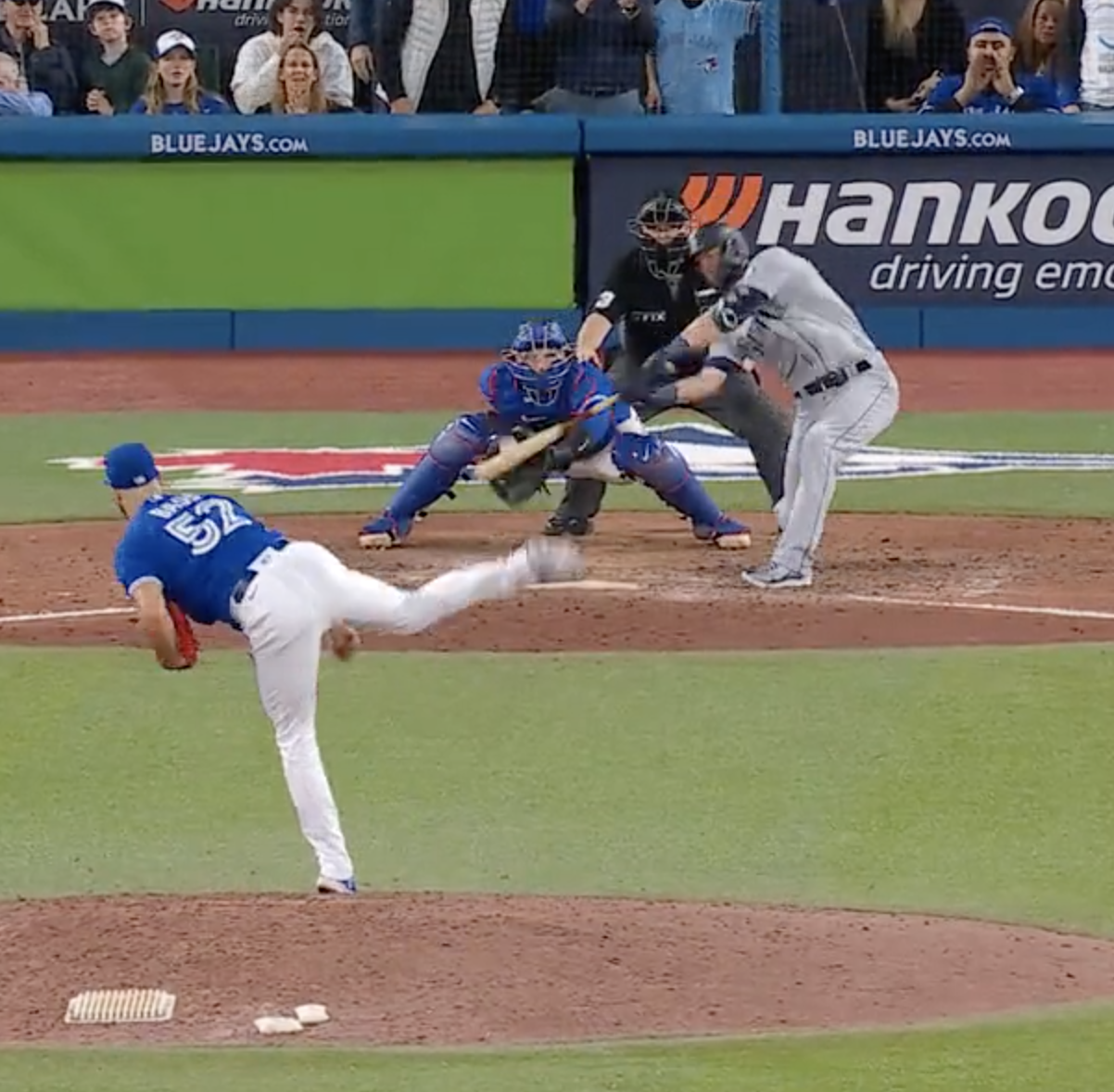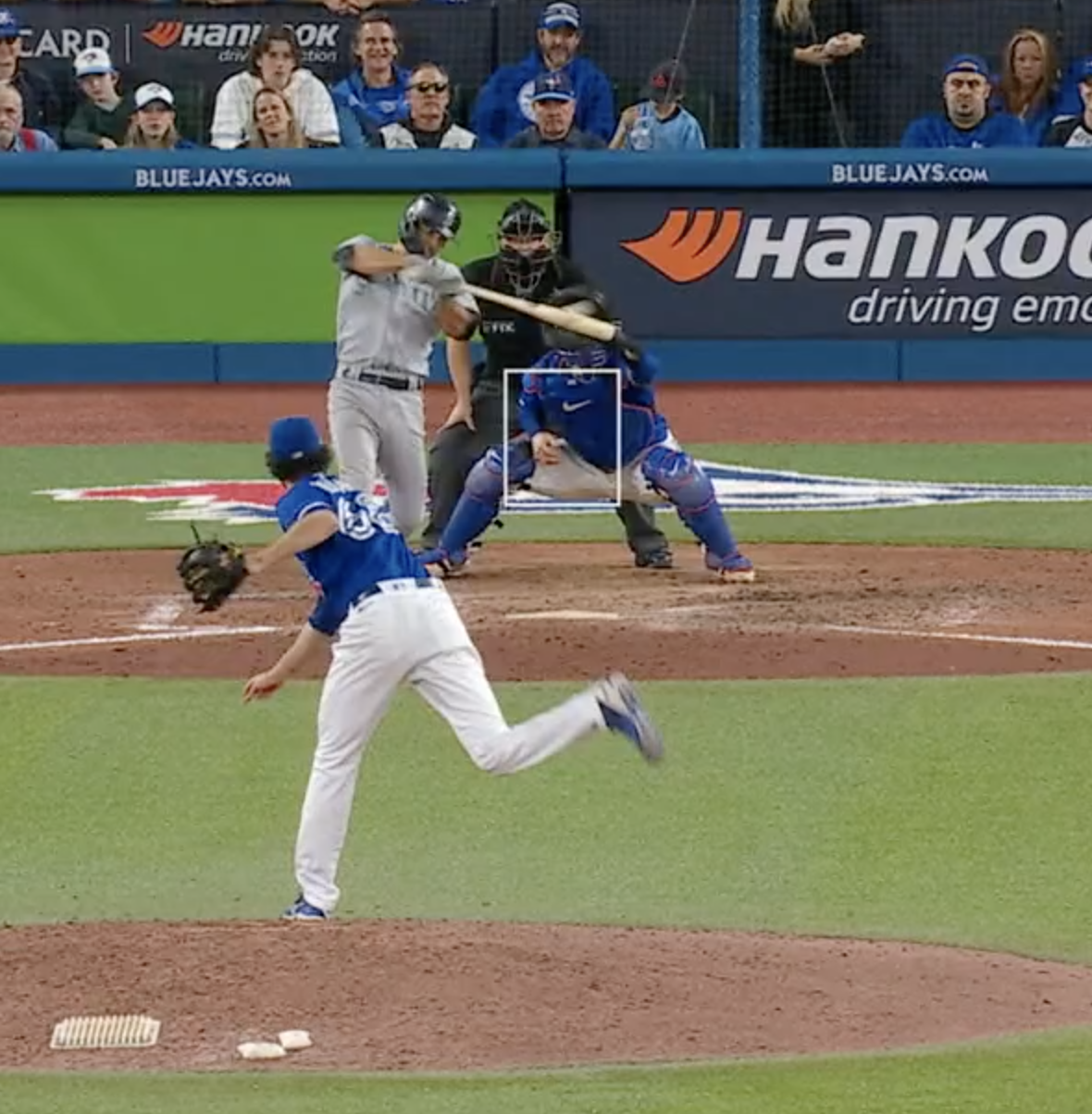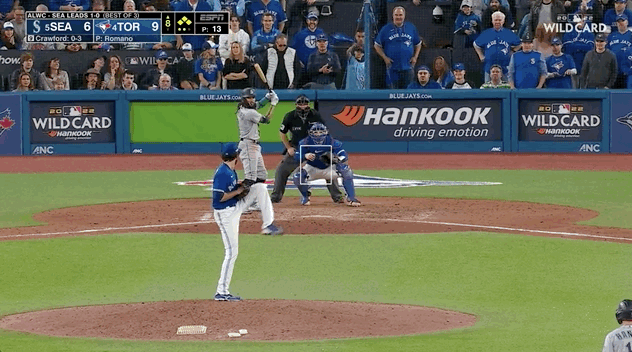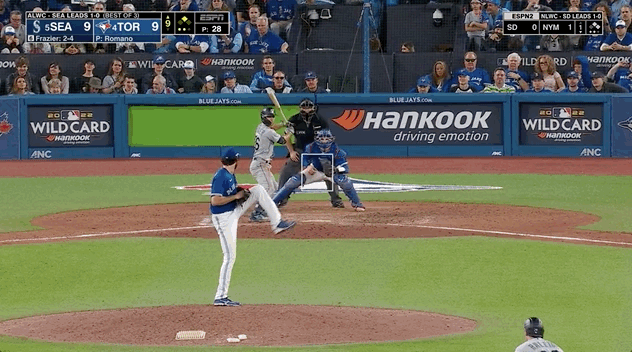
TORONTO — It is the privilege and bane of MLB closers that, when the most meaningful moments and fate-changing postseason events occur, they’re the ones with the ball in their hand. They begin the chain of events that are remembered forever. They wear the glory or the heartbreak. And so, as the final four Seattle Mariners crossed home Saturday, completing one of the most insane and improbable postseason comebacks in MLB history, Jordan Romano was on the mound.
“I just feel like I let everyone down after a really long, fun season,” Romano said. “I feel like I needed to be that guy. I needed to end the game there. And I could have. But it didn’t happen. So, the feeling is just despair.”
Leaning on his locker nearly an hour after the final out of the Toronto Blue Jays 2022 season was recorded, Romano still hadn’t watched any of it back. Why bother? He remembered some of the pitches. The 1-2 slider to strike out Carlos Santana; the 2-2 slider that got Dylan Moore. That elevated heater in a fastball count to Cal Raleigh he’d like to have back. And the first pitch slider to Adam Frazier that produced the winning run.
Did Romano leave that pitch to Frazier a little bit too high? In a little too risky of a spot down-and-in to a left-handed hitter?
“Maybe. Maybe just a touch up. I’d have to watch it,” Romano said, kicking at the carpet beneath him. “I don’t know — it probably was. He hit it, right? That’s all that matters.”
It’s easy to get lost in the granular with baseball. We know so much now. We can quantify the bend of every pitch inch by inch. Measure the feet outfielders cover, the miles per hour balls travel. We can show you the film, slowed down, frame by frame. And, as we poke through the embers of a Blue Jays season that burned out in an instant, we will. It’s what we do.
But for the guys who throw those balls or try to hit them with sticks or chase them around a field, there’s little reason to. It doesn’t help. It’s baseball. The game’s cruel. It’s irrational. It doesn’t make sense. We dissect these events down through endless layers of substrata like it’s a science. But it’s not. It’s closer to art, which isn’t the right word. Performance, execution, action — something like to that. Just a kid from Markham like Romano throwing a baseball as hard as he can. Trying and failing in front of everyone he knows.
“It really sucks. I went out there, I competed, and I did my thing. But it wasn’t good enough today,” Romano said. “I should have been able to handle that situation. I just didn’t today. You give everything you’ve got and it just wasn’t good enough. That’s pretty tough to swallow.”
It’s the hardest part for the Blue Jays closer — knowing he’s had worse days than Saturday. Days when he took the mound without his best velocity, without his best stuff, without a feel for his command. Days he’s gutted through and gotten the lucky bounce and found a way. Days he had no business earning a save in a high-pressure spot but still did.
But Saturday? Romano had his stuff. His slider was breaking as much as it always does. He had his velocity, sitting 97 and touching 98. He was getting the hitter reactions he wanted, earning eight whiffs on 19 swings. The two balls the Mariners put in play against him in the eighth inning came off bats at 70.4 and 82.3-m.p.h. For Romano, it’d be easier to stomach if he’d been giving up rockets.
“That’s the hardest part,” Romano said. “But that’s the way baseball is. That’s what we signed up for, you know? It’s that kind of game.”
In the bullpen, Romano started warming to enter Saturday’s mayhem in the bottom of the seventh inning, preparing for a save attempt that could begin at any time. He knew it could come in the eighth, could be in the ninth. All Romano focused on was being ready for whenever it did.
In the dugout, Blue Jays manager John Schneider was operating on multiple tracks. If the score held where it was, 8-5, Yimi Garcia was going to come back out to face Eugenio Suarez — Garcia recorded the final two outs of the seventh — before Romano took over against Cal Raleigh behind him. But if Toronto’s offence could extend the lead to four, Schneider was comfortable handing the eighth inning to Anthony Bass, betting the veteran whose 1.54 ERA ranked seventh among MLB relievers this season could get that lead to Romano in the ninth.
In the batter’s box, Danny Jansen made the decision, driving in Teoscar Hernandez with a one-out double to push Toronto’s lead to 9-5. But Bass began the eighth with a soft-contact Suarez fly ball that evaded a shaded-towards-centre Raimel Tapia in left and ended up a double. Then Raleigh took a changeup off the plate to left-centre to cash Suarez. And Mitch Haniger flicked a two-strike, down-and-away slider back up the middle.
Quick sidebar — despite the three hits, Bass didn’t pitch poorly. Suarez doubled against a 96-m.p.h. Bass fastball right up in his kitchen. He hit a lazy fly ball — 79-m.p.h. exit velocity — with a four per cent hit probability. Tapia had 101 feet to run thanks to the shift he was playing in and covered only 96 of them before the ball fell in.
Whether Jackie Bradley Jr. ought to have been in the game to try to make that play — or, if Bradley entered as a defensive replacement in centre, shifting George Springer to right, whether Hernandez could have gotten to the ball — is a question Schneider will be asking himself all winter. Regardless of the answer, that ball dropping in wasn’t on Bass.
Meanwhile, here’s the pitch Raleigh hit:
And the one Haniger somehow sent back up the middle:
What else could Bass do? If he had those pitches back, would he throw them any differently? On a night the baseball gods chose to inflict chaos and havoc upon Rogers Centre, that’s about as baseball’ed as a guy can get.
Anyway, enter Romano. He needed to get six outs, a difficult task made only more challenging as Frazier hacked the third pitch Romano threw — a 96-m.p.h. heater above the letters — into left field to load the bases. Not to put too fine a point on it, but the Mariners did some pretty incredible things against pitches outside the zone in that inning:
But Jordan Romano’s still Jordan Romano, so he struck out the next two batters with the bases loaded. And because Jordan Romano’s Jordan Romano, he did it with sliders. He threw four straight to sit down Santana swinging, and four more sandwiched around a pair of fastballs to retire Dylan Moore.
This is what he does. Quietly, Romano’s been one of the game’s best closers over the last two seasons, pitching to a 2.13 ERA that ranks sixth among 138 qualified relievers. The only full-time closer with a lower ERA is Emmanuel Clase (1.33). Romano’s is lower than Edwin Diaz (2.38), lower than Ryan Pressly (2.56), and lower than Liam Hendriks (2.66). Reliever ERA may not be everything. But in the results business of closing ballgames, it sort of is.
When we think of Romano, we think heat. Heavy duty, high-90’s fastballs up in the zone. That’s what you see most often on his highlights; that’s why they put flames around his name and flash bright red lights when he enters ballgames. But Romano’s best pitch is his high-80’s slider and he knows it.
That’s why he threw it more often than his fastball in 2022 and used it over 60 per cent of the time from August through the end of the season. Romano’s convicted in the pitch; he believes that when he locates it anywhere down in the zone, particularly away from righties, he’s getting an out.
But the one he threw J.P. Crawford with two out and the bases loaded in that eighth inning wasn’t down-and-in, wasn’t down-and-away, wasn’t strike-to-ball. It was up and over. And by the size of the cut Crawford took, you could tell he was waiting for it.
And of course he was. Romano had thrown 13 pitches to that point, 10 of them sliders. Pretty good bet. But Crawford still missed it with his barrel, lifting a weak, lazy, 70-m.p.h. pop up into the Bermuda triangle beyond second base. You’ve no doubt seen what happened next:
“When it first came off the bat, I thought, ‘That’ll be caught.’ But then the longer I was looking at it, I was like, ‘Oh, shit, that might be in no man’s land.’ And that’s a pretty tough feeling just watching that ball,” Romano said. “You make a decent pitch and the ball goes up and it’s out of your hands. It’s just right in the middle of two guys. And they collided, and three runners are coming in, and the guys are out there down on the ground. It’s a tough, tough feeling. But that’s baseball.”
It took a while after that to pick up the pieces. Bichette shook it off; a cart came out for Springer. Romano watched most of it from a squat behind the mound, reminding himself that no matter how intense the emotional swings had been in that inning, he had to stay even-keeled. He still had a job to do. Another batter to get. And, maybe, another inning after that.
Romano got that next batter, Ty France, with another slider barrage, his third strikeout of the inning. And after Toronto failed to score in the bottom half, he marched back out from his dugout to try to preserve a tie in the ninth.
Three sliders, three swinging strikes, Suarez down with authority. But the scouting report against Raleigh said fastball was the pitch, so Romano threw him four straight. The first three were OK. The last one missed out and over the plate, as the Mariners folk hero drove it into the gap for a double.
Not Romano’s best pitch of the night, but also not a backbreaker if he could keep Raleigh where he was. And Romano got within an out of doing it after popping up Haniger with a pair of sliders. But his very next pitch — Romano’s 29th and final of the night — was a slider he started maybe an inch too high on the plate. It was in a location he’s gotten away with plenty of times before; in the same spot where he’d gotten swinging strikes from Suarez and foul balls from Moore. But not this time:
And that right there was the game-winner. Frazier’s compact, left-handed swing getting around on a Romano slider that came in at 87-m.p.h., spun at 2,036 revolutions per minute, and broke 37 inches vertically — all right in line with his season averages. Romano had his best pitch Saturday. Even late into his outing. He was in the zone, towards the edges, off the heart of the plate. But then baseball flipped over the turn and the river, and Romano took a bad beat.
“Honestly, I feel like I pitched my game. I was attacking the strike zone. They were just hitting it,” Romano said. “Felt like I had good stuff. I got the four strikeouts on all sliders. The pitch to Crawford, he didn’t hit it well. He just put it in the perfect spot there. Felt like it was a lot of that. Same thing to Frazier. I was trying to make my best pitch there. But it didn’t work. He hit it, you know? That’s all that matters.”
Game’s lost, season’s over. Romano got beat on a good day. As he said, that’s baseball. It’s a cruel sport we can dissect six ways to Sunday but still doesn’t have to be rational and doesn’t have to make sense.
So, what now? He gets up and comes back for more. Romano wants to spend the winter in the weight room getting bigger, more explosive. The Blue Jays have told him he can nudge up his velocity if he gets stronger in the right areas. And Romano believes it.
“I want to throw harder,” Romano said. “And I want to throw harder more consistently.”
Romano finished 2021 pitching with a torn meniscus in his left knee, and surgery to repair it cost him six weeks of off-season strength training. He spent the first half of 2022 — in which his fastball velocity hovered in the mid-90’s — trying to make up for all that time lost recovering from the procedure.
He finally got his heater back up to 97-98 by mid-season and hit 100 six times in August and September. Entering this off-season healthy, Romano believes he can keep building from there and add more juice. There are a couple of mechanical tweaks that could help, too, building off the work he did in June to iron out a movement inefficiency that crept into his delivery post-surgery.
This is what closers do. They turn the page quickly. They get on with it. Even after the worst days of their careers, they find ways to keep going. Because it’s a privilege to be in a meaningful, fate-changing moment like Romano was Saturday. A bane, too. But that’s the game they play.
“If I can keep the velo up all year and just refine the slider a little bit, I know I’ll be in a good position. I know we’ll be back in this situation,” Romano said. “And hopefully, as a team, we won’t have to feel like this again.”












